The Art Deco movement emerged during the 1920s and 1930s, a period known as the Roaring Twenties. Characterized by its luxurious and glamorous style, Art Deco left a lasting impact on various design fields, including interior design.
This blog explores the resurgence of Art Deco in contemporary interior design, highlighting its distinctive features, historical context, and influential elements.
1- Background
The Roaring Twenties marked a significant cultural shift, characterized by economic prosperity, technological advancements, and a newfound sense of liberation. It was a time of exuberance and extravagance, reflected in various aspects of society, including art, fashion, and design.
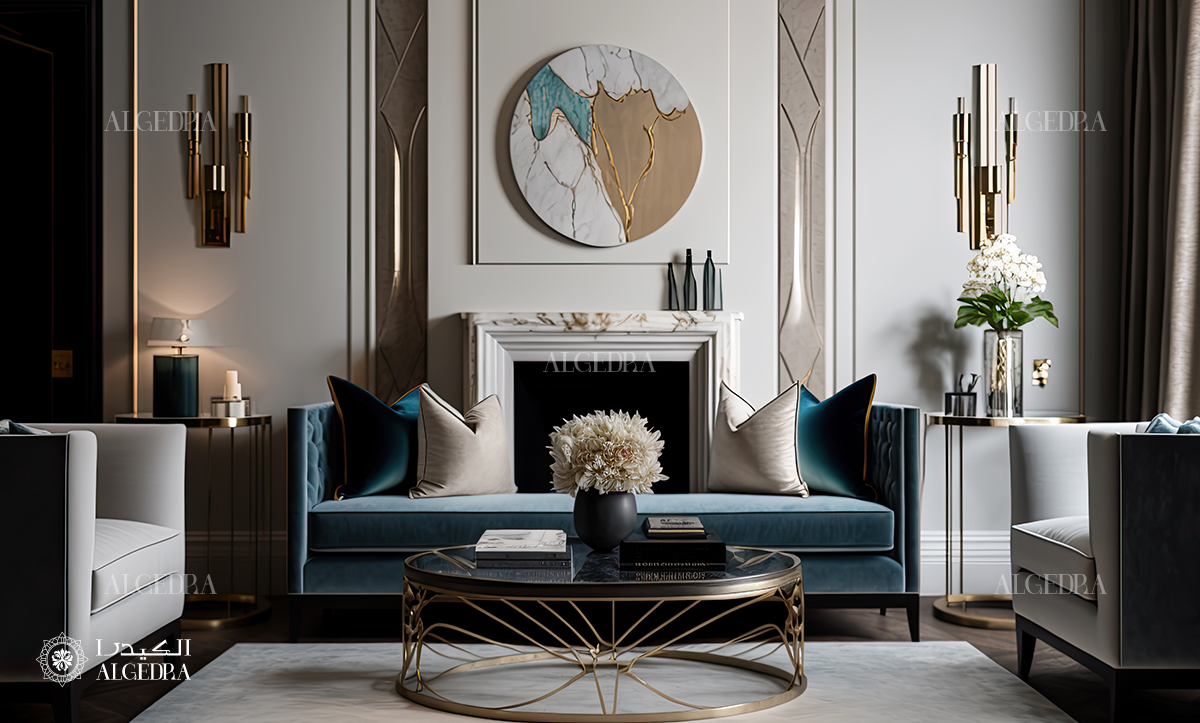
One of the prominent design movements that emerged during this period was Art Deco. Initially originating in Europe, Art Deco quickly spread across the globe, leaving an indelible mark on interior design.
2- Art Deco - A Brief Historical Overview
2.1 Origins and Influences
Art Deco drew inspiration from a diverse range of sources, including the geometric forms of Cubism, the luxurious materials of the Orient, the streamlined aesthetics of modern technology, and the exoticism of ancient civilizations.
It originated in Europe, with its roots in the 1925 Exposition Internationale des Arts Décoratifs et Industriels Modernes held in Paris, which showcased the new artistic direction.
2.2 Emergence and Popularity
Following its debut at the Paris exhibition, Art Deco gained popularity worldwide, spreading across continents and influencing various design disciplines. Its opulent style and emphasis on modernity resonated with the spirit of the Roaring Twenties and became synonymous with luxury, sophistication, and progress.
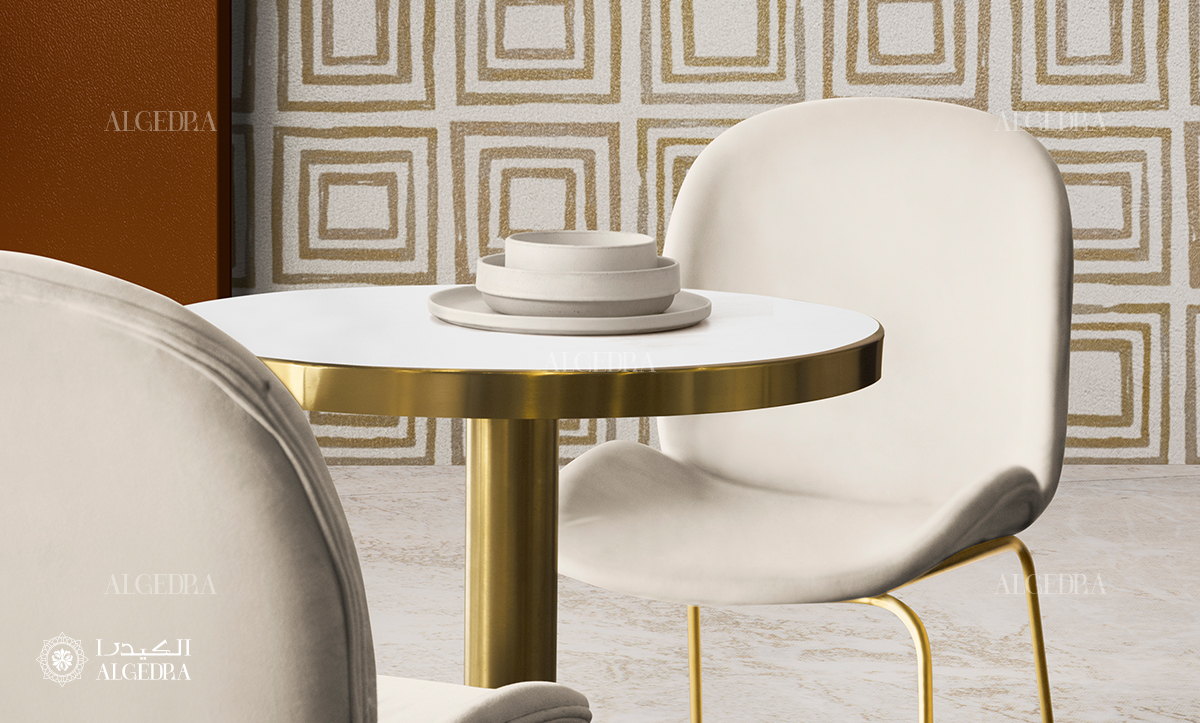
2.3 Key Characteristics
Art Deco is characterized by its bold geometric shapes, symmetrical compositions, and stylized motifs. It often features luxurious materials such as exotic woods, metals, and lacquered surfaces. The movement embraces a sense of exuberance and grandeur, with an emphasis on decorative details, vibrant colors, and geometric patterns.
3- Art Deco in Interior Design
3.1 Influence on Architecture and Interiors
Art Deco had a profound influence on architectural design, shaping the aesthetics of buildings during the 1920s and 1930s. It favored streamlined, modern forms, with buildings featuring geometric shapes, elaborate ornamentation, and intricate detailing. Art Deco principles were seamlessly integrated into interior design, transforming living spaces into glamorous and luxurious environments.
3.2 Defining Features
Art Deco interiors are characterized by a harmonious balance between elegance and functionality. The style embraces clean lines, smooth surfaces, and a sense of symmetry. Rooms are often designed with a sense of drama, employing bold geometric patterns and contrasting colors to create visually striking spaces. Attention to detail is paramount, with decorative elements such as stepped motifs, sunbursts, and chevron patterns adding visual interest.

3.3 Materials and Finishes
Art Deco interiors showcase a rich array of materials and finishes. Exotic woods like Macassar ebony and rosewood were popular choices for furniture, flooring, and paneling. Metals such as chrome, brass, and bronze added a touch of luxury and glamor. Lacquered surfaces, mirrored accents, and glass insets enhanced the reflective quality of the design, creating an atmosphere of opulence.
3.4 Colors and Patterns
Bold and vibrant colors played a significant role in Art Deco interiors. Deep jewel tones like emerald green, sapphire blue, and ruby red were used to create a sense of richness and intensity. Contrasting color combinations, such as black and gold or white and black, added a striking visual impact. Geometric patterns, including zigzags, chevrons, and sunbursts, adorned walls, floors, and textiles, adding a dynamic and energetic element to the space.
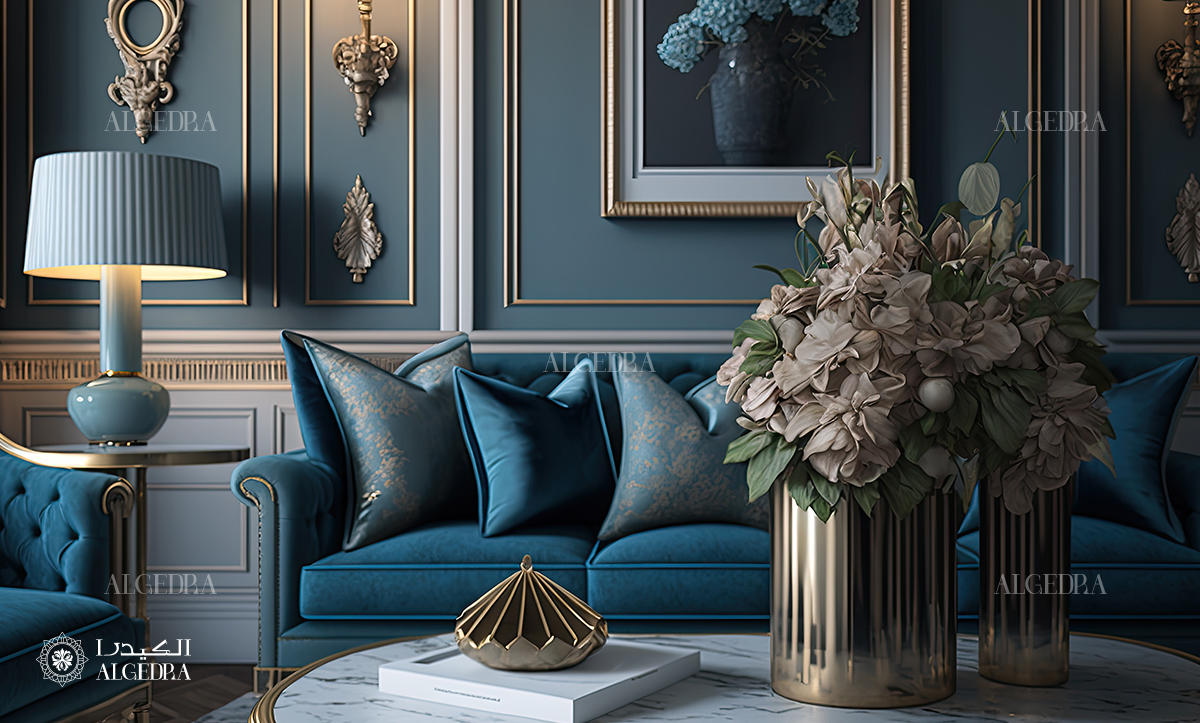
3.5 Furniture and Decorative Elements
Art Deco furniture is characterized by its sleek and angular forms. Chairs, sofas, and tables often feature curved lines and geometric silhouettes. Exquisite craftsmanship and attention to detail are evident in the use of inlay work, marquetry, and veneering techniques. Decorative elements such as geometrically patterned upholstery, luxurious textiles like velvet and silk, and statement lighting fixtures, including chandeliers and sconces, further enhanced the overall aesthetic.

4- Reviving Art Deco in Contemporary Interior Design
The revival of Art Deco in contemporary interior design can be observed in various settings. Notable examples include:
4.1 The Great Gatsby Mansion - A Modern Interpretation
Inspired by F. Scott Fitzgerald's iconic novel, "The Great Gatsby," contemporary designers have created modern interpretations of the grand mansions depicted in the book. These spaces embrace the opulence and grandeur of Art Deco, incorporating rich materials, geometric patterns, and luxurious finishes. The interiors feature high ceilings, statement chandeliers, and plush furniture, evoking the lavishness and exuberance of the Roaring Twenties.
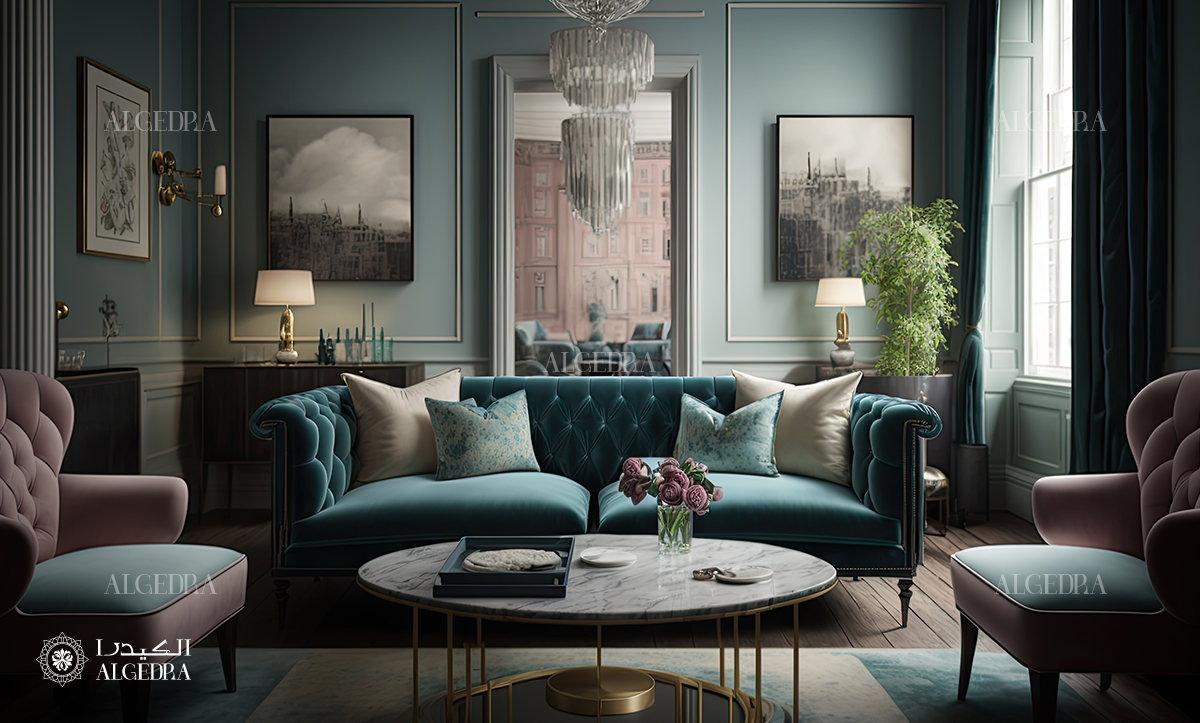
4.2 Luxury Hotels - A Return to Glamour
Many luxury hotels around the world have embraced Art Deco design to create sophisticated and glamorous environments. These hotels pay homage to the era's elegance and incorporate Art Deco elements through architectural details, such as grand entrances, ornate moldings, and intricate metalwork. Interior spaces feature sumptuous materials, geometric patterns, and striking color schemes, providing guests with a sense of indulgence and refinement.
4.3 Residential Spaces - Blending Nostalgia and Modernity
In residential interior design, Art Deco has experienced a resurgence as homeowners seek to infuse their spaces with a touch of nostalgia and timeless glamor. Contemporary interpretations of Art Deco interiors combine iconic elements, such as geometric wallpaper, mirrored surfaces, and velvet upholstery, with modern furnishings and technologies. The result is a harmonious blend of the past and the present, creating visually stunning and functional living environments.

5- Reasons for Revival
5.1 Nostalgia and Cultural Resurgence
The revival of Art Deco in interior design can be attributed, in part, to a cultural resurgence and a longing for the glamor and elegance of the past. As society evolves, there is often a desire to revisit and celebrate iconic eras that evoke a sense of nostalgia and collective memory. Art Deco, with its distinctive style and associations with the Roaring Twenties, provides a tangible link to a bygone era, capturing the imagination and fascination of designers and homeowners alike.
5.2 Embracing Opulence in a Postmodern World
In an era marked by minimalism and understated design, the resurgence of Art Deco represents a desire to embrace opulence and extravagance once again. Art Deco interiors offer a departure from the restrained aesthetics of contemporary design, providing an opportunity to indulge in luxurious materials, vibrant colors, and ornate details. It allows individuals to create spaces that exude a sense of richness, individuality, and personal expression.
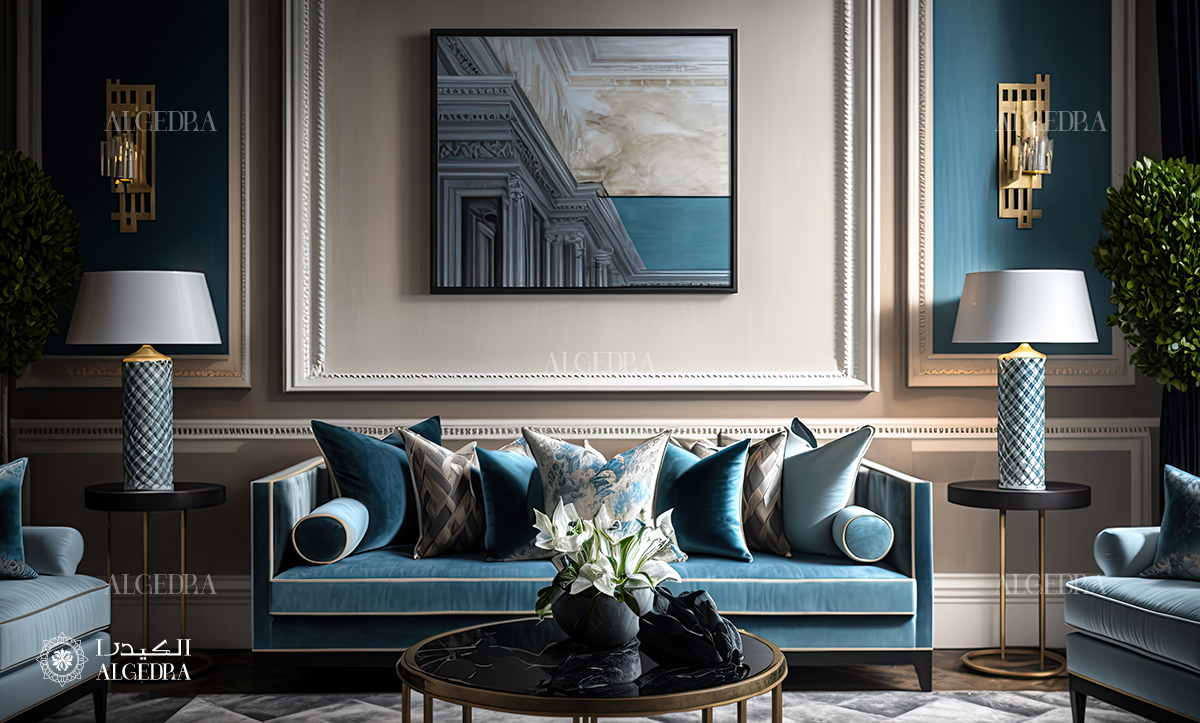
5.3 Timeless Elegance and Versatility
Despite originating in the 1920s, Art Deco possesses a timeless quality that continues to captivate designers and homeowners. Its bold geometric forms, sumptuous materials, and intricate craftsmanship have proven to be adaptable to different design styles and contexts. Whether incorporated in a contemporary or traditional setting, Art Deco elements can add a touch of elegance, sophistication, and drama, making it a versatile choice for interior design.
6- Challenges and Adaptations
6.1 Balancing Authenticity and Modernity
One of the challenges in reviving Art Deco in contemporary interior design is striking a balance between authenticity and modernity. While embracing the iconic elements of Art Deco, designers must also ensure that the spaces remain functional and relevant to the needs of modern lifestyles. This often involves adapting Art Deco features to contemporary materials, technologies, and spatial requirements without compromising the essence and spirit of the style.

6.2 Accessibility and Affordability
Art Deco design can be associated with luxury and opulence, which may present challenges in terms of accessibility and affordability. Some authentic Art Deco pieces and materials can be rare and expensive, making it challenging for homeowners with budget constraints to fully embrace the style. However, there are alternatives available, such as high-quality replicas, vintage finds, or incorporating Art Deco-inspired elements into existing designs. By carefully selecting key focal points and blending them with more accessible design choices, homeowners can achieve an Art Deco aesthetic within their means.
Conclusion
The revival of Art Deco in interior design highlights the timeless appeal and enduring relevance of this iconic style. As the world continues to evolve, designers may explore further adaptations and interpretations of Art Deco, blending it with other design influences.
By incorporating the distinctive elements and opulent aesthetics of Art Deco into contemporary spaces, designers and homeowners can infuse their environments with a touch of glamor, nostalgia, and timeless elegance.
The Art Deco revival not only pays homage to a bygone era but also showcases the adaptability and enduring legacy of this influential design movement.